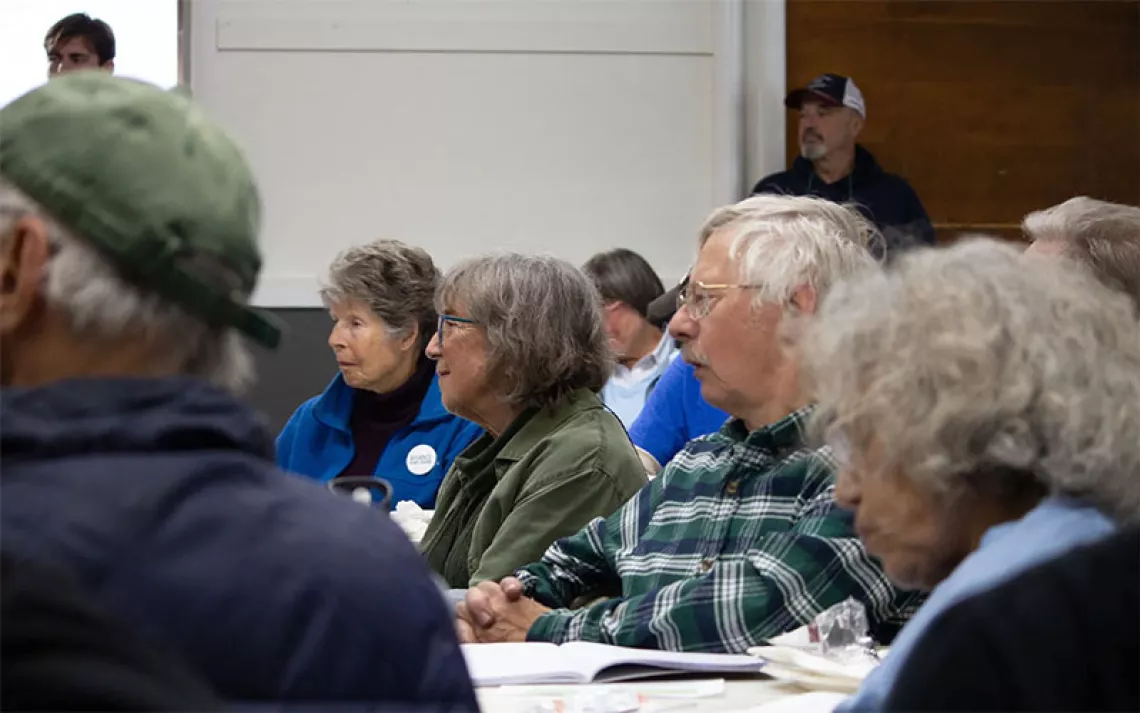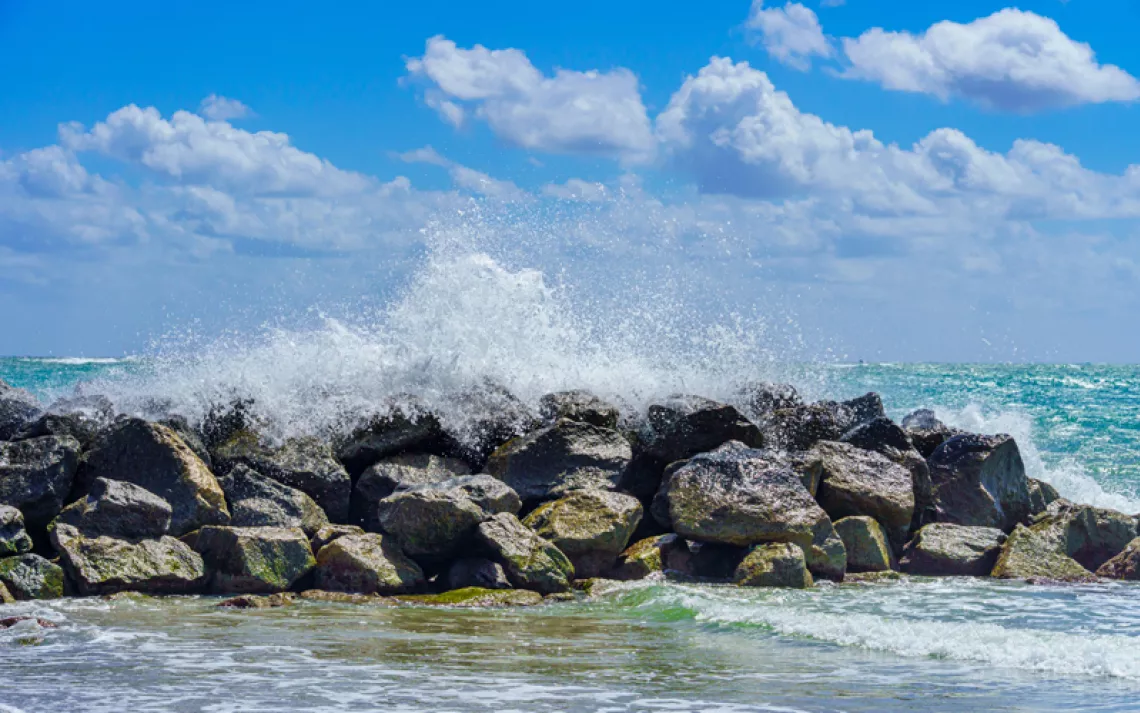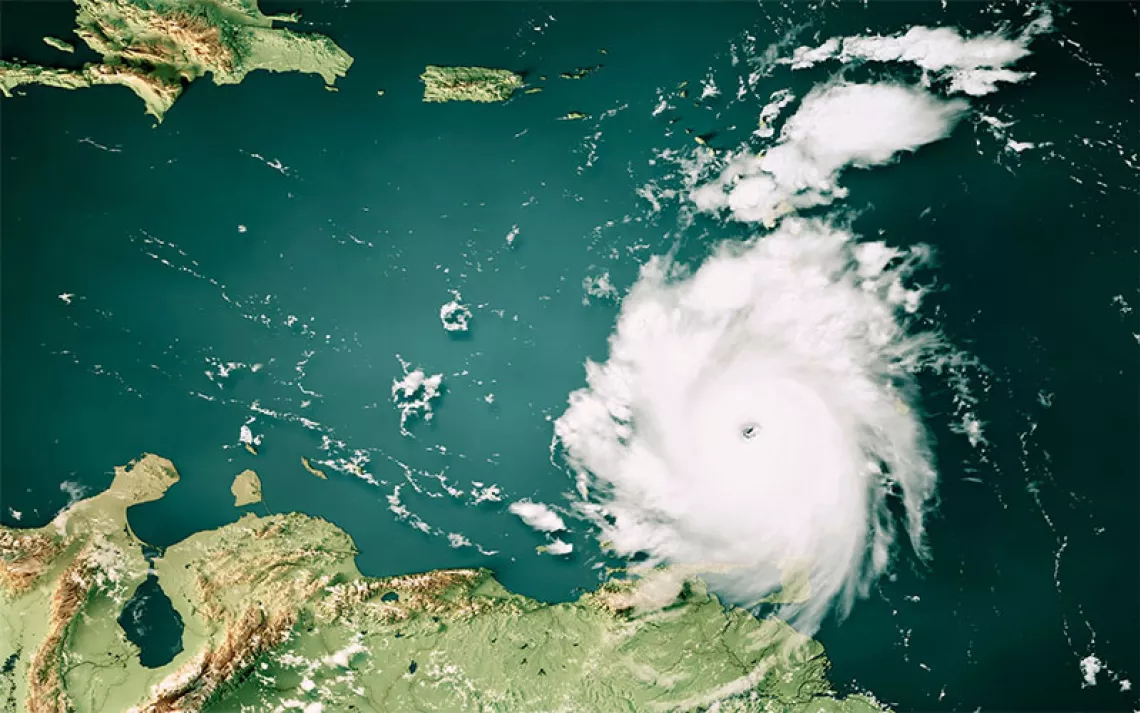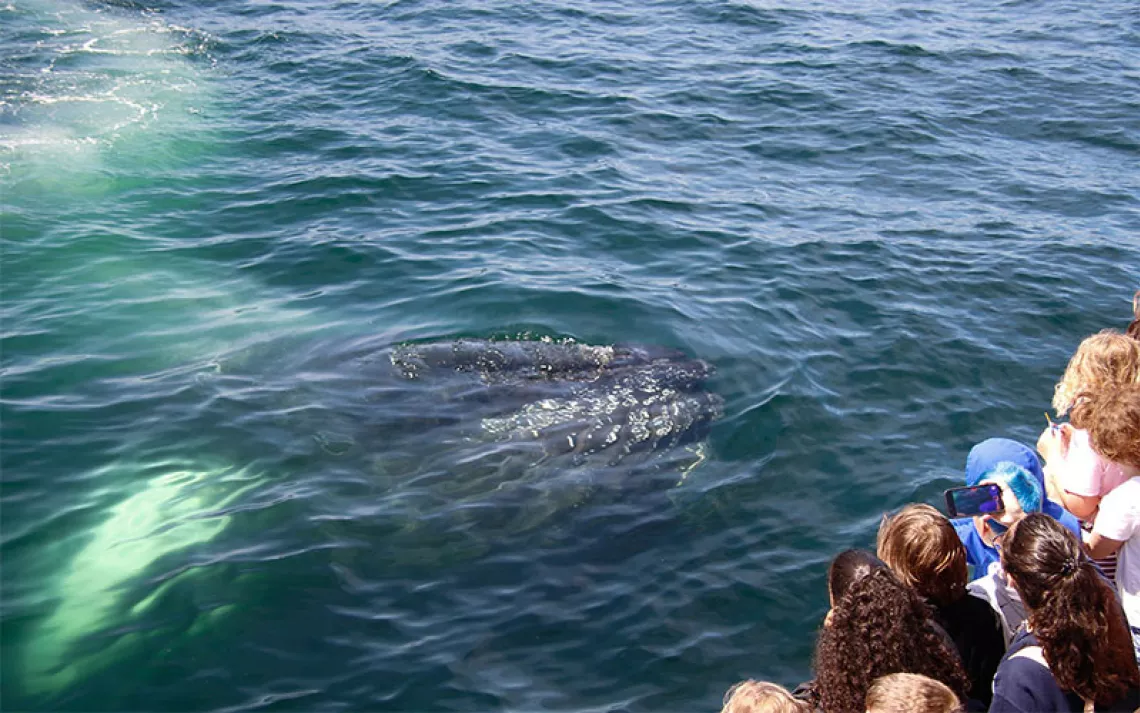On the Water With Haíłzaqv Coastal Guardian Watchmen
These guardians are protecting biodiversity for future generations
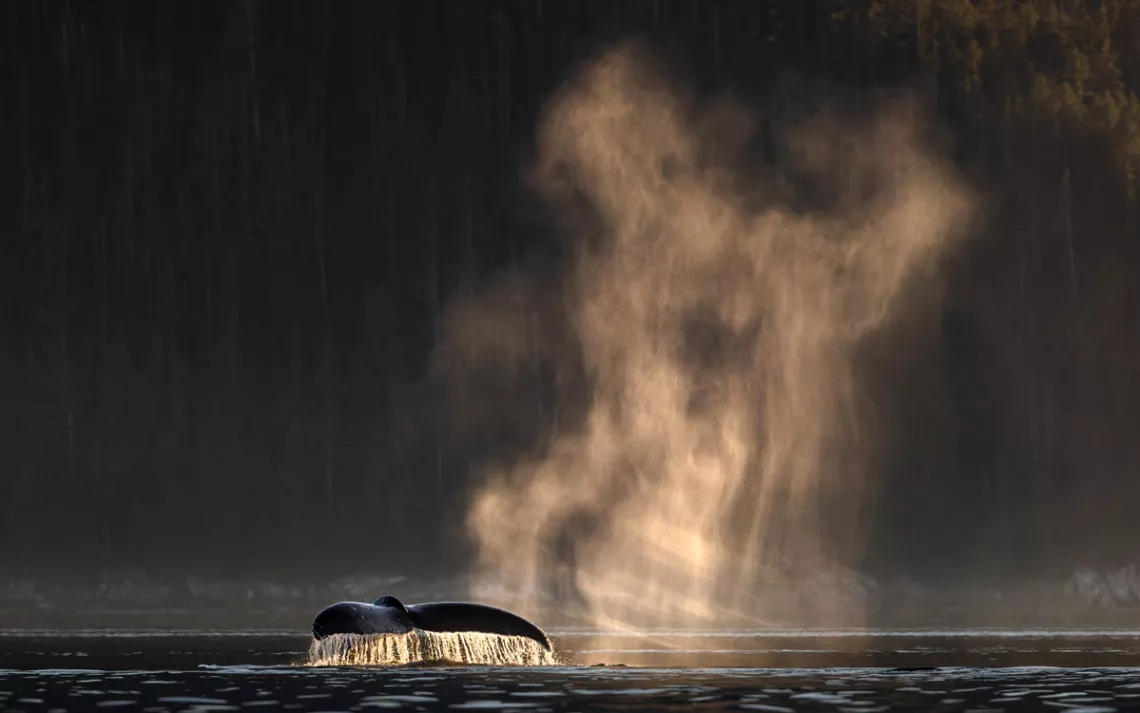
A humpback whale in British Columbia. | Photo by Liron Gertsman
Each weekday morning, Howard Humchitt heads into the Inside Passage on a 26-foot sportfishing boat, leaving from Martins Marina, north of Bella Bella in British Columbia. His father, his grandfather, and their ancestors were all fishermen. “I’ve been out here since I was in diapers,” said Humchitt, a member of the Haíłzaqv First Nation. His role differs from that of his forebears, though. As a Haíłzaqv Coastal Guardian Watchman, Humchitt’s mission is not to fish but to protect future generations’ right to fish and thrive in ancestral territory.
For more than 10,000 years, the Haíłzaqv (pronounced heilt-suk) have been stewards of their lands and seas along Canada’s Central Coast. This large temperate rainforest is one of the planet’s most ecologically rich areas, home to salmon, grizzly bears, and kelp forests. In recent decades, however, this biodiversity has come under threat from illegal fishing, careless tourism, and climate change. To confront these challenges, the Haíłzaqv and the Kitasoo/Xai’Xais, alongside other coastal First Nations, launched the Coastal Guardian Watchmen Network in 2005. Since then, eight nations, including the Haíłzaqv, have established guardian programs tailored to sustaining their local environments. “We’re here every day, seeing as much of our territory as we can,” Humchitt said. “That way we can protect what is left.”
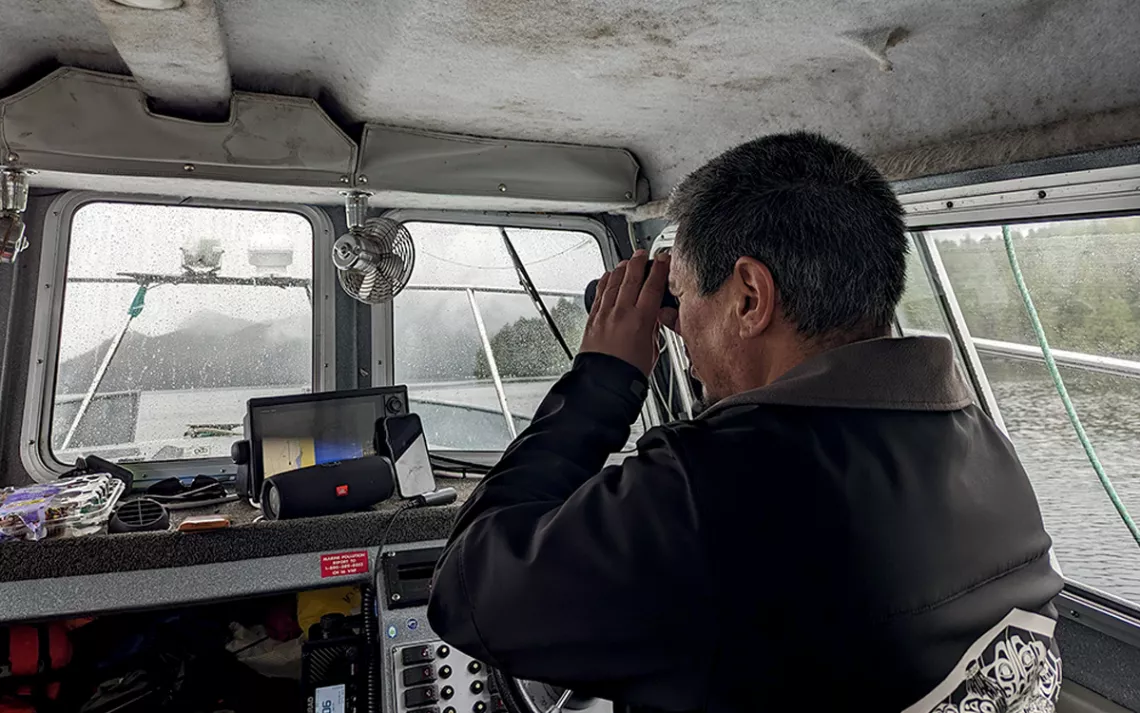
Coastal Guardian Watchman Howard Humchitt scans the water for fishing buoys and wildlife. | Photo by Jane Palmer
Haíłzaqv means “to speak and act in the right way,” and gˇvı’lás ( gwee-eelas)—customary laws—inform the nation’s roughly 2,500 members on how to engage with one another and the natural world. While the watchmen use a combination of modern science, technology, and traditional knowledge to carry out their tasks as stewards, gˇvı’lás guide their daily interactions with the ocean, its inhabitants, and other humans. “We bring our old ways into the way we work today,” Humchitt said.
Times have changed in the waters around Bella Bella. Years ago, Humchitt’s family and friends used to visit Troup Passage for picnics, quickly catching enough fish or crabs to eat and releasing what they didn’t need. “Now we have to work hard just to get dinner,” he said.
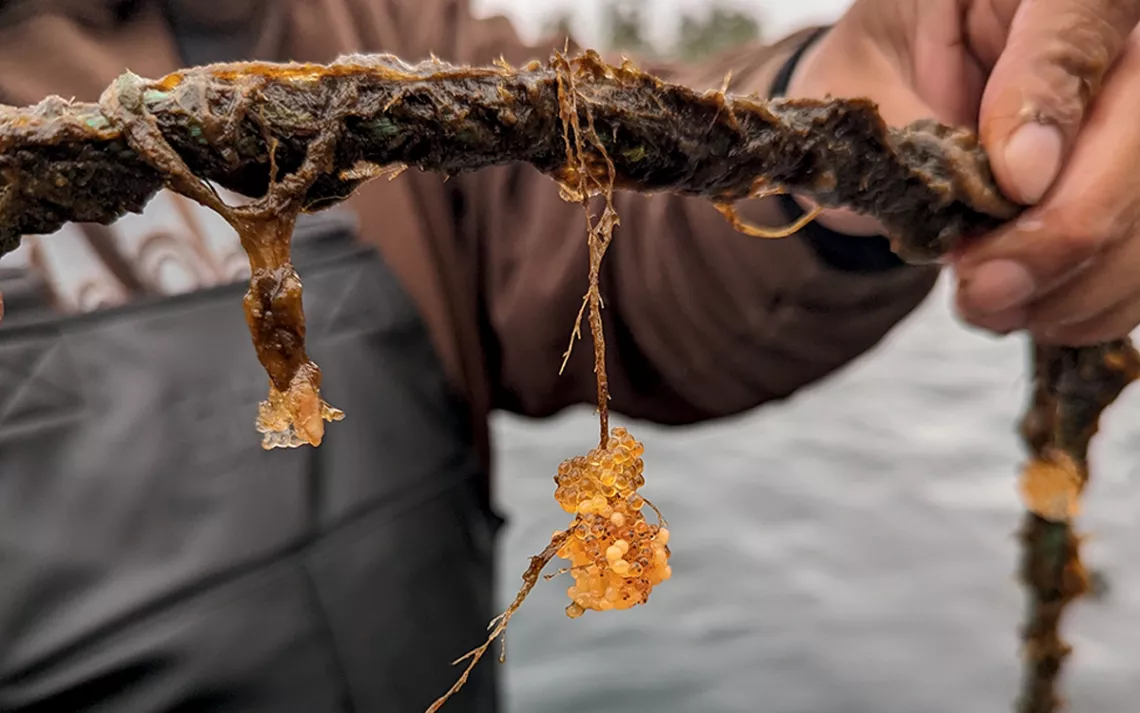
Watchman Lenard Stewart holds up a rope covered in needlefish eggs.
Commercial fishing on the Central Coast began in the late 19th century, and overfishing has contributed to recent fish stock declines. In 2015, after a standoff between the Haíłzaqv Nation and the Canadian government about harvesting herring, the Haíłzaqv gained back a stake in their own fisheries through a joint management agreement with Fisheries and Oceans Canada (DFO). The guardians now collect data, which they own, on fish catches and the population health of species, such as salmon and herring. They share the data and management recommendations with the government when needed. “They just don’t have the resources to know this place to the level of detail that we know it,” Humchitt said.
The comanagement model aligns with the government’s commitment to the reconciliation process, which aims to recognize Indigenous rights and address historical and ongoing injustices. The Haíłzaqv don’t recognize the term reconciliation, however. “Reconciliation is when two people did something wrong and you come together and fix it, and that is not what happened,” said Dúqva’ísla William Housty, director of the Haíłzaqv Integrated Resource Management Department.
Instead, the Haíłzaqv use the term haíłcístut (heilt-tee-chute), which means “to turn things around and make them right again.” It is still a rocky process: In 2022, DFO banned the spawn-on-kelp herring harvest, a traditional approach to sustainable fishery management, in Haíłzaqv territory. The Haíłzaqv Nation asserted that this decision contradicted the management plan it developed with the agency, and in March 2024, the Haíłzaqv Nation sued Canada over the ban. At press time, the suit was still unresolved.
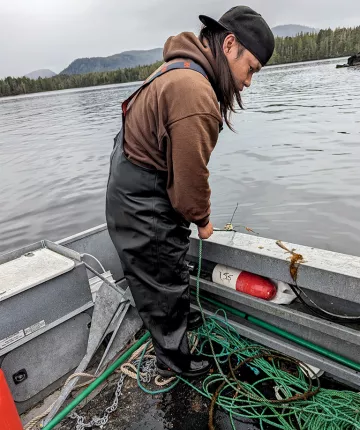
Stewart retrieves an underwater instrument that collects data on water temperature and tides.
The day I met up with Humchitt and fellow watchman Lenard Stewart, the team was checking that commercial and tourist fishermen were following rules and regulations. They quickly spotted a pink buoy—the telltale sign of a fish trap. Humchitt pulled up alongside it, and Stewart noted its serial number and how many baskets were attached to it. At each buoy, he entered the information into CoastTracker, a custom mobile app Indigenous guardians use for logging data.
As the eyes and ears of the ocean, the watchmen scan the shoreline for anything moving, binoculars at the ready. The two reported that they had seen a few black bears and a grizzly that spring, and as we turned a bend, Stewart’s intake of breath seemed to alert us to another sighting. But it was only the “bear-shaped rock,” which had fooled him yet again. “I know it’s coming, but it still gets me every time,” he said, laughing.
The guardians also monitor cultural and archaeological sites. At noon, nearly 30 nautical miles from Bella Bella, we arrived at a wide, tree-lined bay beneath Mt. Keyes where miniature walls of stones stretch across the inlet. For centuries, when salmon migrated back to the streams where they were born, the fish would swim over these walls with the incoming tide. As the tide receded and the water level dropped, the walls trapped the fish in holding ponds. The Haíłzaqv would harvest the weaker fish and let the stronger ones survive to swim upriver and spawn. “Once our ancestors selected what they needed, they’d open the traps and let the rest escape,” Humchitt said.
Until recently, little information existed on salmon catches and the number of fish that made it to spawn, which was a critical gap in understanding how to manage the remaining populations. Haíłzaqv guardians, collaborating with scientists, have started monitoring sport and Haíłzaqv capture, counting sockeye and coho salmon populations. “The salmon data we collect is used to inform stock assessments for preseason and in-season fishery planning,” said William Atlas, a salmon watershed scientist with the Wild Salmon Center.
Throughout our time on the boat, the guardians had been in perpetual motion: skippering, peering through binoculars, stopping at buoys, and logging data and animal sightings. But toward the day’s end, the team spotted the spout of a feeding whale, and time seemed to stand still as we watched and waited. Humchitt switched off the engine, and we drifted. Not a sound alerted the whale’s food that we, or it, were there. Suddenly, the humpback’s gaping mouth exploded through the surface, reaching upward, netting hapless prey in seconds. Then it snapped its jaws shut, performed an elegant arch, and with a flip of the fluke was gone. Humchitt gently guided the boat away until we were far enough to speed up without scaring off the whale’s prey. “We punch a clock,” he said. “But we got paid today by witnessing a humpback whale feed.”
THREE R’S OF INDIGENOUS STEWARDSHIP
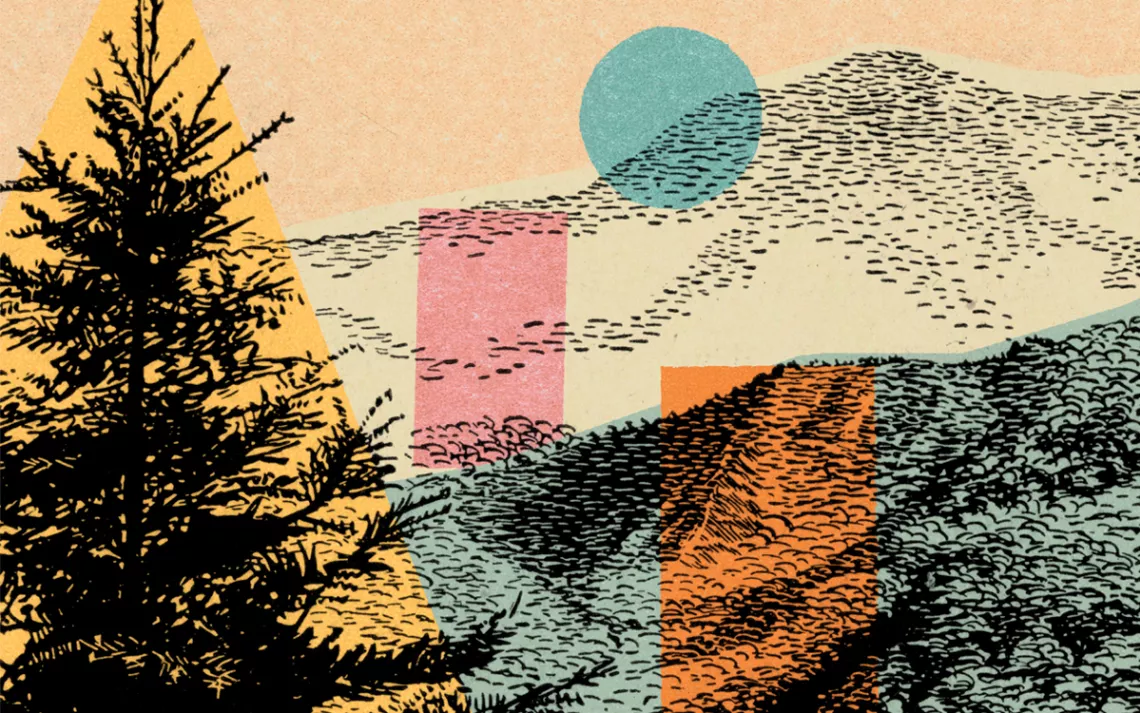
The Haíłzaqv take a values-based approach to environmental stewardship and conservation. These are three of their core values.
Respect
Before harvesting from the land and sea, the Haíłzaqv hold ceremonies asking permission from the land, animals, and waters to hunt or fish, and afterward express gratitude for what they received. They will leave sacred trees standing out of respect, only taking from them—for canoe building or totem carving—with the guidance of elders.
Responsibility
The Haíłzaqv believe they have a duty to care for the land, water, and all living beings, protecting the environment for future generations by harvesting timber and fish in a way that will not deplete the resources.
Reciprocity
To ensure sustainability and equilibrium in the ecosystem, the Haíłzaqv give back to the environment in return for the resources and benefits it provides, such as planting trees and medicinal plants and restocking fish populations.
 The Magazine of The Sierra Club
The Magazine of The Sierra Club
